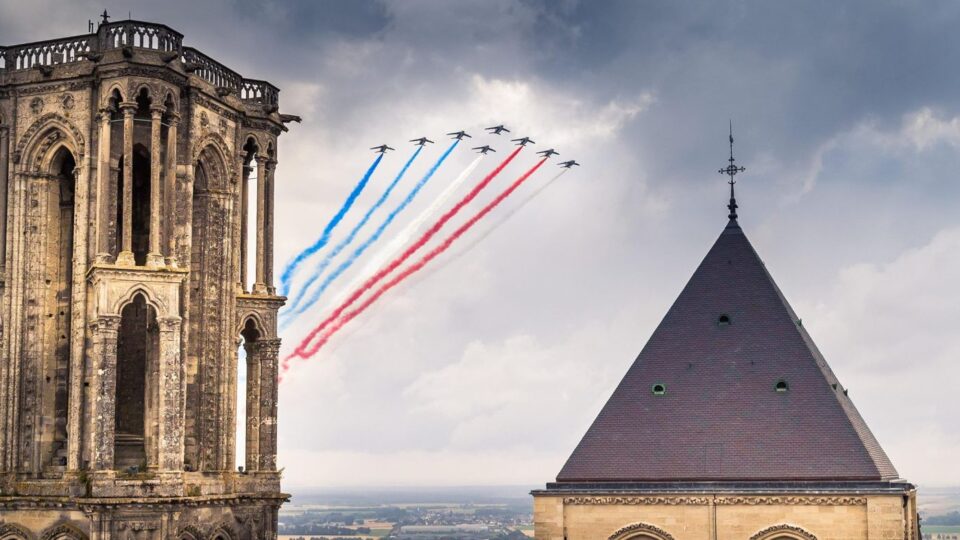10 of the Best Local Festivals in France
Wherever you travel, festivals are often the best way to get a first-hand experience of the local culture. They bring life and color, music and tantalizing smells to otherwise quiet streets, and lend you the opportunity to share in an event that is marked on the locals’ calendars months in advance. Stumbling across the best festive travel destinations is a real treat for travelers, whether you’re a devout foody or the sort to start dancing in the street.
If you want to attend a local French festival then you have come to the right place. Here, you will find out what the top festivals in France are, so you can have the best time the next time you go. Take a look below to find out more.
Dunkirk Carnival (Carnaval de Dunkerque)
Origins
- Historical Roots: The Dunkirk Carnival’s origins trace back to the 17th century. Fishermen from Dunkirk would embark on lengthy fishing expeditions to the icy waters of Iceland. Before their departure, a festive send-off celebration took place. The festival, over time, grew in significance and scale.
- Transformation: The carnival was not solely a pre-departure festivity for fishermen. It evolved over the centuries into a massive public celebration, adapting various traditions and customs.
Main Events
- Tossing of the Herring: One of the most iconic events during the carnival is the throwing of salted herring from the belfry in the town’s main square. Thousands gather below, eager to catch these fish as a part of the tradition.
- Balls (or “bals”): Traditional and rowdy dances are held, where attendees dress up in colorful and sometimes eccentric costumes. The “fishermen’s ball” (bal des pêcheurs) is among the most renowned.
- Chanting Sea Shanties: Given its maritime origins, singing traditional sea shanties (or “chahuts”) is an integral part of the celebrations.
- Costumes: While there isn’t a fixed theme, many participants don fisherman-like outfits, referencing the carnival’s roots. However, cross-dressing and wearing colorful, eccentric costumes are also widespread.
Duration and Timing
- The carnival spans several weeks, typically taking place between January and March. The exact dates can vary, and there are multiple events throughout this period.
Modern-Day Significance
- Cultural Preservation: The carnival serves as a testament to Dunkirk’s rich maritime history and the evolution of its cultural practices. By celebrating it annually, the city keeps its historical roots alive.
- Tourism Boost: The Dunkirk Carnival is one of the most famous in France, drawing numerous tourists. This influx provides a significant economic boost to the region.
Unique Features
- The “Kop-Cœur”: This is a ritual where attendees form tight-knit circles, locking arms and dancing while singing traditional songs.
- Masks and Disguises: Anonymity is a key component of the celebration. People often wear masks or disguises, a practice rooted in the idea of ensuring unity and erasing social distinctions during the carnival.
- Prejudice Erosion: The essence of the festival lies in its ability to blur social boundaries. People from all walks of life come together, shedding their daily identities and prejudices.
The Dunkirk Festival is very colorful and it is celebrated by locals, far and wide. It is held every year from January to March, and people love to dance, sing, and march through the streets. If you live in France then you should know that people tend to wear masks or disguises, because you have to be anonymous. Of course, the main essence of the festival is that it brings people from several social classes together. You can also leave behind a lot of prejudice which is great. The festival tends to be celebrated in the towns of Dunkirk and Flanders, so if you want to go for yourself then make sure you check it out.
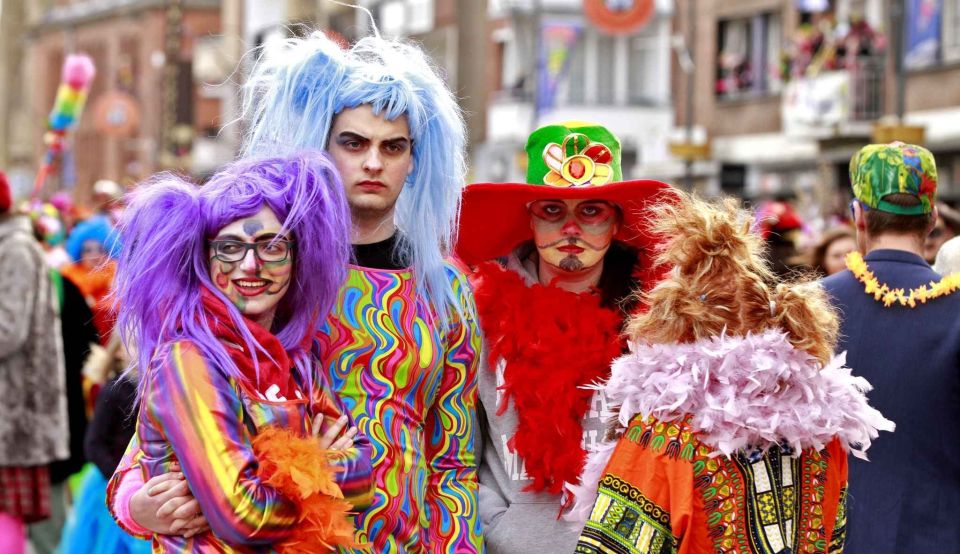
Menton Lemon Festival
The first time that Mentonians celebrated this festival, which is called the La Fete Du Citron, was around 1933. It was primarily celebrated in the Bioves Garden and it took place from the 12th of February until the 27th of February every single year. The festival was celebrated on the French Riviera and this area is known for producing some of the finest lemons around.
During the festival, it is very easy for you to see cars or even trains that are made out of fruit, so it’s no surprise the locals love it so much. You also have several parades of oranges and lemons. Marching bands and entertainers wear great costumes and you also have the general exhibition of fruit sculptures which stretch way above the audience. This is a real show stopper and sometimes up to 15 tons of fruit is used. If you love to see France for everything it has to offer then you will not want to miss out on this treat.
La Fête de la Musique (Music Day)
Origins
- Concept: The idea for La Fête de la Musique was conceived in the 1980s by Maurice Fleuret, the Director of Music and Dance at the French Ministry of Culture under Jack Lang, the then French Minister of Culture. The inspiration behind this event was a 1982 study which revealed that five million French people, half of whom were young people, played a musical instrument.
- First Edition: The first Fête de la Musique took place on June 21, 1982. June 21 was chosen not only because it’s the summer solstice, the longest day of the year, but also to symbolize the new beginning and growth that music brings to society.
Philosophy
- The guiding principle of the event is free music for all, breaking down barriers between people and making music accessible to everyone. All concerts and performances are free for both the artists and the audience.
- It celebrates the universal nature of music, crossing all genres and demographics. This democratization of music encourages both amateur and professional musicians to showcase their talent.
Highlights
- Nationwide Participation: Almost every city, town, and village in France participates. Streets, parks, squares, courtyards, museums, castles, and other public places are transformed into performance spaces.
- Diverse Genres: The festival spans a vast array of music genres – from classical to jazz, rock to hip-hop, traditional to electronic, ensuring there’s something for everyone.
- Open Participation: Anyone can participate. As a result, besides planned events, many spontaneous performances also pop up everywhere. It’s not uncommon to see children, senior citizens, amateurs, and professionals playing side by side.
- Night-long Celebrations: While the festival officially begins in the evening, it often continues throughout the night, turning cities into a night-long musical extravaganza.
Global Impact
- Given its success in France, the concept of La Fête de la Musique has been adopted by numerous countries around the world. It’s now celebrated in over 120 countries, each adding its unique cultural touch to the festivities. Some countries refer to it as “World Music Day.”
Modern Day Evolution
- With the rise of digital technology, many artists and groups now promote their Fête de la Musique appearances on social media, broadening the festival’s reach.
- In some places, themed stages or specific genres have become popular, where multiple acts perform under a shared musical style or theme.
La Fête de la Musique isn’t just a festival; it’s a movement that champions the unifying power of music. For one day, it transforms public spaces into stages, cities into audiences, and every individual into both a performer and a listener. It’s a testament to the magic of music and its ability to bring people together, transcending differences. If you ever find yourself in France on June 21, you’ll witness a nation united in melody.
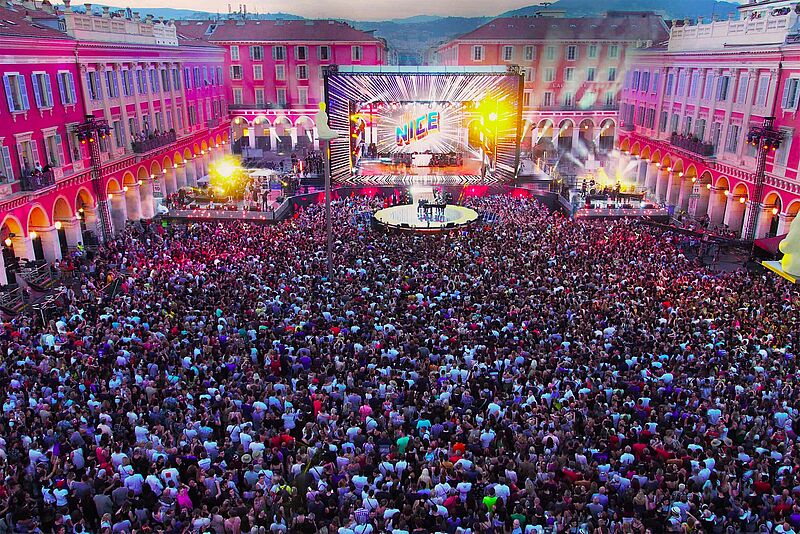
Bayonne Festival
The Bayonne Festival is also known as the Fetes De Bayonne. It is celebrated in the town of the same name at the end of July every year. The French tend to observe this celebration by watching fireworks and also going out into the streets. They are dressed in Basque clothing and they make a real part out of it. During this festival, which locals look forward to, people tend to enjoy Basque dances, parades and concerts.
You also have things like cow races and even Basque balls. Fireworks are common and so are public balls. The festivities are not to be missed and if you want to have the best time then you will want to make sure that you get there early so you can make the most out of all the local attractions. It is a fantastic festival with so much to offer, not to mention that the local food scene is nothing short of amazing.
Nice Carnival (Carnaval de Nice)
Origins
- Historical Roots: The Nice Carnival is one of the world’s oldest, with its origins dating back to at least 1294. This was when the Count of Provence, Charles Anjou, mentioned the joyous carnival days in the city of Nice in his writings.
- Transformation: Over centuries, the celebration evolved from simple gatherings and dances into a large-scale event with elaborate parades, costumes, and more.
Themes and Events
- King of Carnival: Each year, the carnival revolves around a specific theme, and a giant “King” figure is designed in line with this theme. This “King” is a central figure in the parades.
- Bataille de Fleurs (Battle of Flowers): This is one of the event’s most colorful and anticipated spectacles. Magnificently decorated floats drive along the Promenade des Anglais, with performers throwing thousands of flowers into the crowds. It celebrates the region’s floral industry.
- Corso Illuminé: A nighttime parade that lights up the streets of Nice with illuminated floats, dancers, and musical performances.
- Burning of the King: On the last night of the carnival, the King is set on fire, symbolizing the end of the event and, traditionally, the ushering in of spring.
Features
- Floats and Effigies: The parade consists of 18 large floats and other smaller ones, each meticulously designed to be visually striking and pertinent to the theme.
- Performers: Over 1,000 musicians and dancers from around the world participate, bringing a rich cultural diversity to the event.
- Street Events: Aside from the parades, there are also street performances, including theater acts, acrobats, and other entertainers that engage the audience.
Modern Day Significance
- Tourism: The carnival is a significant attraction, drawing hundreds of thousands of visitors to Nice every year. It contributes immensely to the local economy.
- Cultural Preservation: While the carnival has modernized and expanded, it remains a cornerstone of Nice’s cultural heritage, showcasing local traditions, artistry, and more.
Masks and Costumes
- Historically, masks were a significant part of the carnival, allowing attendees, regardless of their social status, to mingle freely. Today, while masks are less prevalent, costumes are still widely encouraged, adding to the festive atmosphere.
Duration and Timing
- The Nice Carnival typically lasts for about two weeks and is held in February. The exact dates vary from year to year.
The Nice Carnival isn’t just a celebration; it’s an embodiment of the city’s vibrant culture, history, and spirit. The event transforms Nice into a world of color, music, and revelry, making it a must-experience for anyone visiting the French Riviera during this time. Whether you’re watching the Battle of Flowers, dancing along to the bands, or simply soaking in the ambiance, the carnival ensures memories that last a lifetime.
Les Fêtes Johanniques (Joan of Arc Festival)
Origins
- Historical Significance: Les Fêtes Johanniques commemorates the heroics of Joan of Arc, or Jeanne d’Arc in French. She is celebrated for her role in leading the French army to a crucial victory over the English at Orléans during the Hundred Years’ War.
- Canonization: Joan of Arc was burned at the stake by the English and their French collaborators as a heretic in 1431. Later, she was posthumously retried and found innocent, and then canonized as a saint in 1920.
Main Events
- Grand Parade: A pivotal highlight of the celebrations is a grand parade where a young girl, representing Joan of Arc, rides on horseback dressed in armor, leading the procession. This role is an honor, and the selection process for the representative is quite rigorous.
- Medieval Fairs: The historical backdrop of the Hundred Years’ War is brought to life with medieval markets, camps, and craft workshops. Attendees get a glimpse of the era through activities such as archery, sword fights, and other medieval games.
- Battle Reenactments: Actors recreate scenes from the siege of Orléans, allowing spectators to witness and feel the intensity and significance of the battles Joan of Arc led.
- Religious Ceremonies: Given Joan’s sainthood, various religious ceremonies are held in her honor, including masses and processions.
Location
- The primary celebrations occur in Orléans, given its direct historical connection with Joan of Arc’s heroics.
Duration and Timing
- The festival typically spans several days in early May. The choice of May aligns with the lifting of the Siege of Orléans on May 8, 1429.
Modern-Day Significance
- National Pride: Joan of Arc remains an emblematic figure for the French, symbolizing courage, faith, and patriotism. The festival serves as a reminder of her sacrifices and the importance of standing up for one’s beliefs.
- Tourist Attraction: Over time, the festival has grown in popularity, drawing not only locals but also international visitors keen to experience the historical reenactments and immerse themselves in medieval French culture.
Unique Features
- Torchlight March: A nighttime procession illuminated by torchlights, evoking the mood and ambience of medieval times.
- Concerts and Performances: Apart from the historical focus, the festival is also a celebration of art and culture. Numerous musical and theatrical performances are held during the festival, catering to a broad audience.
Les Fêtes Johanniques is not just a historical reenactment but a vibrant celebration of French culture, history, and the spirit of resilience. The festival brilliantly juxtaposes the past with the present, allowing attendees to step back in time while also enjoying contemporary festivities. For anyone interested in French history, Joan of Arc, or simply a unique cultural experience, this festival in Orléans is a must-visit.
Bastille Day (La Fête Nationale)
Origins
- Historical Context: Bastille Day marks the anniversary of the storming of the Bastille prison on July 14, 1789, a key event that led to the French Revolution. The fall of the Bastille symbolized the end of the absolute monarchy and the rise of the republic in France.
- National Significance: This day commemorates not just the storming of the Bastille but also the unity of the French people during the revolution. The day signifies liberty, equality, and fraternity — the core values of the French Republic.
Main Events
- Military Parade: One of the highlights is the annual military parade on the Champs-Élysées avenue in Paris. The French president presides over this parade, which involves various divisions of the French military showcasing their capabilities.
- Fireworks: Firework displays are held in many cities and towns, with the most famous being at the Eiffel Tower in Paris.
- Public Celebrations: Throughout the country, there are dances, parties, and communal meals, often organized in local neighborhoods or by municipalities.
- Bals des Pompiers: Firefighter’s balls are traditional parties organized in fire stations across France. They are public and often serve as fundraisers for the firefighters.
Location
- Celebrations occur all over France. However, the most notable events take place in Paris, given its historical and political significance.
Modern-Day Significance
- National Unity: Bastille Day serves as a reminder of the values that bind the French Republic together. It’s a day for the French to express national pride and reflect on their shared history.
- Cultural Diplomacy: Many French embassies and consulates worldwide host Bastille Day celebrations, fostering a sense of community among the French diaspora and sharing French culture with others.
Unique Features
- Concerts and Performances: Various music concerts, ranging from classical to contemporary genres, are organized throughout the country.
- Historical Reenactments: In some parts of France, there are reenactments of the storming of the Bastille, allowing people to relive this significant moment in history.
- Open Visits: On Bastille Day, many museums and historical sites offer free entry or host special exhibitions related to the French Revolution and the history of the republic.
Bastille Day is more than just a national holiday; it encapsulates the essence of the French spirit and its undying quest for liberty, equality, and fraternity. Whether witnessed through the grandeur of the military parade in Paris or the communal meals in smaller towns, the spirit of unity and celebration is evident throughout the country. For visitors, experiencing Bastille Day in France offers a unique insight into the nation’s soul and its enduring values.
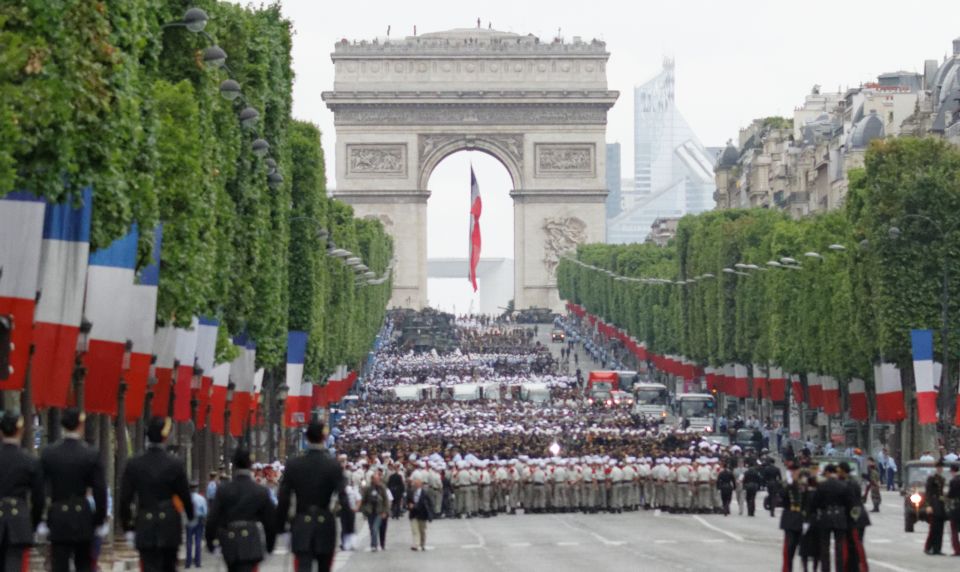
Feria de Nîmes
Origins
- Inspiration: Feria de Nîmes is deeply influenced by Spanish Feria traditions, especially given the geographical proximity and historical ties between the two regions. Nîmes has a rich Roman and later Hispanic heritage, which contributes to the event’s flavor.
- First Feria: The first Feria de Nîmes took place in 1952, and since then, it has been an integral part of the city’s cultural calendar.
Main Events
- Bullfights (Corridas): The arenas of Nîmes, originally built by the Romans, become the stage for traditional bullfights. These bullfights are the centerpiece of the Feria and attract aficionados from across the world.
- Bodegas: Streets of Nîmes are filled with bodegas, which are temporary bars or clubs set up for the Feria. Here, revelers can dance, drink, and socialize.
- Camargue Races: Unlike traditional bullfights, Camargue bull races involve riders attempting to snatch ribbons from the horns of bulls. It’s a less violent form of entertainment rooted in local tradition.
- Parades and Processions: The streets come alive with various parades, featuring traditional costumes, horse-drawn carriages, and dance performances.
- Music and Concerts: From Flamenco to contemporary genres, the city echoes with music throughout the Feria.
Duration and Timing
- Feria de Nîmes happens twice a year:
- Feria de Pentecôte: Held during the Pentecost weekend (50 days after Easter), it lasts for about five to six days.
- Feria des Vendanges: This “Harvest Feria” takes place in September, marking the grape harvest season and is generally shorter than the Pentecost Feria.
Modern-Day Significance
- Cultural Fusion: Feria de Nîmes stands as a symbol of the amalgamation of Roman, French, and Spanish cultures. This blending gives the festival a unique ambiance, distinguishing it from other Ferias in Spain or France.
- Tourism Magnet: The event attracts hundreds of thousands of visitors each year. The vibrant festivities, combined with the historical allure of Nîmes, make it a prime tourist destination during the Feria.
Unique Features
- Historical Setting: The backdrop of Nîmes, with its well-preserved Roman monuments like the Arena, Maison Carrée, and Tour Magne, offers a unique setting for the Feria’s events.
- Night Revelries: The celebrations stretch well into the night, with bodegas and streets buzzing with activity till the early hours.
- Diverse Celebrations: While bullfighting is central, the Feria ensures inclusivity by offering various other forms of entertainment, catering to a broad spectrum of visitors.
The Feria de Nîmes is more than just a festival; it’s a vibrant display of multicultural heritage, set against the backdrop of a city rich in history. While the bullfights might be its most talked-about feature, the Feria’s soul lies in its streets – where music, dance, and communal revelry bring together locals and tourists in a grand celebration of life and culture. Whether you’re an aficionado of bullfighting, a history buff, or someone looking to soak in the festivities, Feria de Nîmes promises a memorable experience.
Festival d’Avignon
Origins
- Beginnings: The Festival d’Avignon, also known simply as Avignon Festival, was founded in 1947 by Jean Vilar, a renowned actor and director. Vilar was invited to present his production at the “Semaine d’Art” in Avignon, and he subsequently transformed this event into the festival as we know it today.
- Humble Start: What began as a modest theater event has blossomed into one of the world’s most significant and renowned performing arts festivals.
Main Events
- In Festival (In): This is the official part of the festival, where selected performances are showcased in various historical sites around Avignon, the most famous being the “Cour d’honneur” of the Palais des Papes.
- Off Festival (Off): A more spontaneous, fringe event that runs parallel to the main festival. It features thousands of performances in various locations throughout Avignon — from established venues to more improvised settings.
Duration and Timing
- When: The festival typically takes place in July and lasts for about three weeks.
- Scale: Over the duration of the festival, Avignon becomes a city-theater, with performances happening almost everywhere and at all times of the day.
Modern-Day Significance
- Global Spotlight: Festival d’Avignon has become a global hotspot for theater enthusiasts, professionals, and critics. It sets the tone for contemporary performing arts and is a platform where new talents are discovered.
- Cultural Exchange: With participants coming from all over the world, the festival is a melting pot of cultures, ideas, and artistic expressions.
Unique Features
- Diverse Performances: Apart from theater, the festival showcases dance, visual arts, and sometimes even cinema and music, offering something for everyone.
- Interactive Platforms: The festival organizes debates, discussions, and workshops where artists, critics, and audiences can interact, share ideas, and discuss the performances.
- Historical Venues: The historical settings of Avignon, especially the Palais des Papes, provide a unique ambiance that enhances the festival’s charm.
Economic and Social Impact
- Tourism Boost: Every year, the festival attracts over 100,000 visitors, providing a significant boost to Avignon’s economy.
- Artistic Launchpad: Many artists who showcased their work in Avignon, especially in the Off Festival, have gone on to achieve international acclaim.
The Festival d’Avignon is not just a celebration of performing arts but a congregation of art, history, and global cultures. In the heart of Provence, for a few weeks, the medieval streets of Avignon resonate with contemporary artistic expressions, making it a must-visit for anyone passionate about theater and performing arts. The festival’s legacy and ongoing contributions to the global arts scene make it an unparalleled event in the world of theater.
Lille Braderie (Braderie de Lille)
Origins
- Ancient Tradition: The Lille Braderie is one of Europe’s oldest and largest flea markets, with its origins dating back to the 12th century.
- Serving Servants: Initially, the braderie was an annual fair where servants were allowed to sell off their masters’ discarded items.
Main Events
- Street Stalls: Over 10,000 exhibitors and traders set up stalls, transforming Lille’s streets into a massive open-air market, stretching over 100 kilometers.
- Mussel and Fry Feast: A unique tradition associated with the Braderie is the serving of “moules-frites” (mussels and fries). Restaurants compete to create the largest pile of empty mussel shells outside their premises.
Duration and Timing
- When: Held annually during the first weekend of September.
- Duration: It typically lasts for 48 hours, from Saturday to Sunday.
Modern-Day Significance
- Tourist Magnet: The Braderie draws in between 2 to 3 million visitors each year, making it a major event in France’s cultural calendar.
- Cultural Symbol: Over the centuries, it has grown from a local flea market to a significant cultural event, representing Lille’s vibrant community spirit and history.
Unique Features
- Diverse Offerings: The market boasts a vast array of items – from antiques and collectibles to books, clothes, and household items. It’s a treasure trove for collectors and bargain hunters.
- Races: The Braderie also features fun races, such as the “half-marathon of Lille” and events for roller-skaters and cyclists.
Economic Impact
- Boost to Local Economy: With millions of visitors flooding the city, local businesses, especially hotels, restaurants, and cafes, enjoy a significant boost during the weekend.
- Trade Opportunities: For many traders and sellers, the Braderie is an essential annual event that provides a considerable portion of their yearly sales.
Safety and Modern Challenges
- Security Concerns: In light of global events and the vast influx of visitors, there have been increased security measures in recent years to ensure the safety of participants and attendees.
- Environmental Concerns: The massive turnout and extensive stalls sometimes raise concerns about waste management and environmental impact. The city, in response, has taken initiatives to manage waste better and ensure a cleaner Braderie.
The Lille Braderie is more than just a flea market; it’s a celebration of community, history, and shared experiences. The bustling streets, filled with vibrant stalls and the unmistakable aroma of “moules-frites”, capture the essence of Lille’s spirit. Whether you’re hunting for a rare antique, savoring the local cuisine, or simply soaking in the lively atmosphere, the Braderie promises a unique and unforgettable experience.
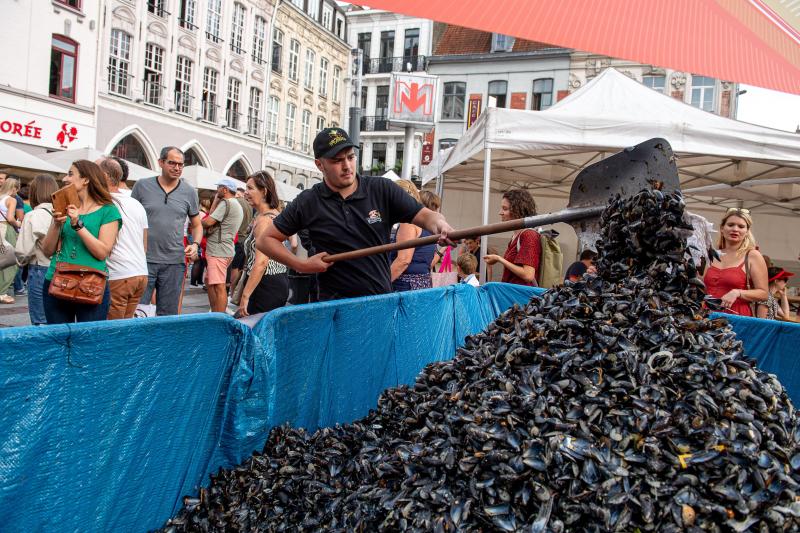
10 of the Best Local Festivals in France – Summary
France’s festivals, with their rich history and exuberant celebrations, offer travelers an unparalleled experience. Each festival, deeply rooted in its local traditions, provides a lens into the diverse and vibrant tapestry of French culture. So, on your next visit, ensure you align your dates with one of these festivals and prepare for an immersive journey into the heart of France.
